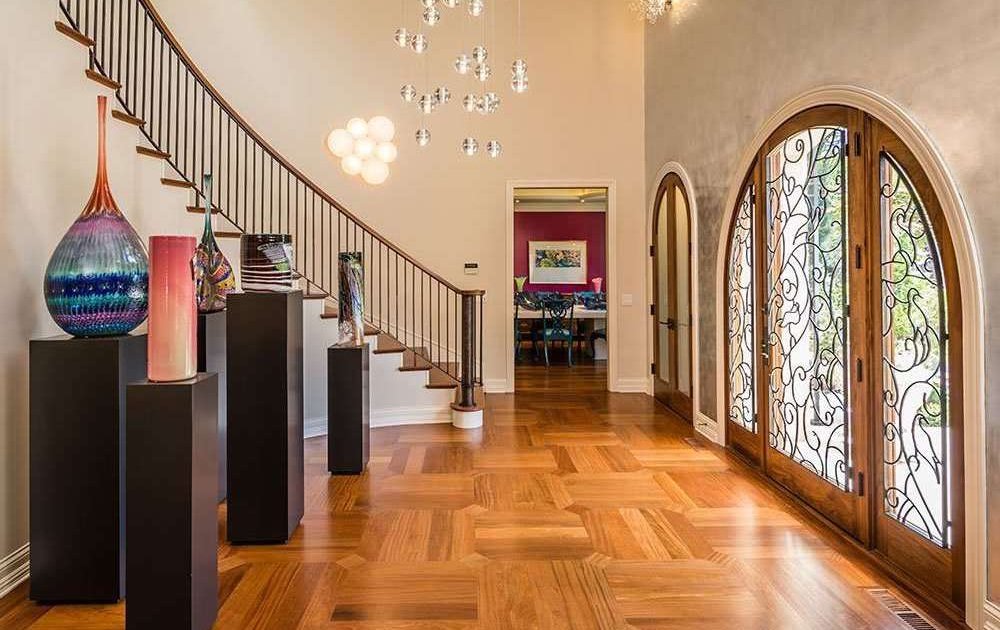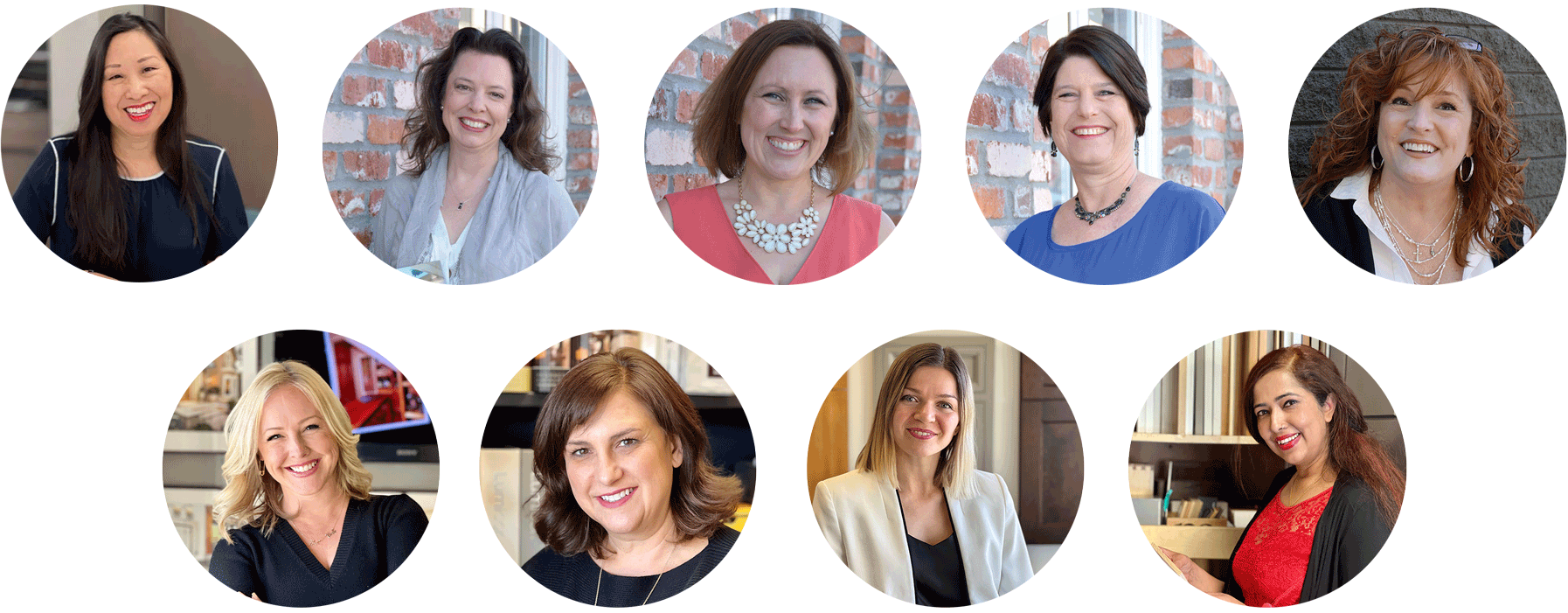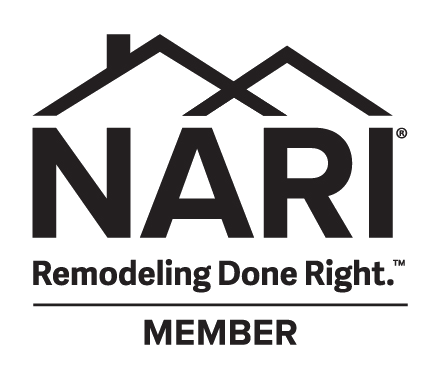The 4-1-1 on Flooring Options
When it comes to residential design, all the senses come into play. A room’s overall visual aesthetic formulates an initial impression, but flooring is how we first interact with a space, making it a fundamental aspect of interior design.
Interested in a remodel? Harrell Design + Build can help!
As a prominent surface, floors can help to create design cohesiveness. Setting the tone of a space by either being a dominant design attribute or a neutral palette, flooring also determines the comfort of a space.
Harrell Design + Build Designers Yolanda Ng and Brooke Nicholson frequently help clients make informed flooring decisions and offer these topics to consider when choosing the flooring best suited to your home, budget, and lifestyle needs.
What attributes should homeowners consider when choosing new flooring?
Six key concepts will inform your choice of flooring material:
- Durability: How much foot traffic a room will endure should help inform the type of flooring
- Comfort: There are spaces, such as bedrooms, in which comfort is paramount
- Appearance: Color, texture, and the overall aesthetic of flooring material should complement the overall design
- Location: Kitchens and bathrooms benefit from flooring that is durable and able to withstand considerable use
- Price: Budget is a deciding factor for many homeowners
- Personal preference: Choose something that you find appealing
What type of flooring should go in each room?
Personal preference plays a role, as does the function of the room. For instance porcelain, stone, or ceramic tile, or other waterproof materials are excellent options for bathrooms and kitchens.
Yolanda points out that who will be using the space should also be taken into consideration. For example, softer materials such as cork or carpet are excellent choices for rooms occupied by children or older adults to minimize injury from falls.
What types of flooring are best for children and pets (i.e.) non-allergenic and non-toxic?
Steering clear of materials that emit VOCs is the primary way to eliminate toxicity. VOCs are volatile organic compounds that vaporize, causing indoor air pollution that can’t help but be inhaled.
Linoleum, prefinished solid wood floors installed without VOC adhesives, ceramic tile, and cork are all non-allergenic and non-toxic. Cork has a soft, cushioned feel, is a sustainable material, and can be placed with no VOC adhesives, making it an excellent option for children.
For flooring that is non-toxic and can withstand the pitter-patter of animal paws, concrete, tile, and laminate are durable and easy to clean.
The Healthy Building Network, founded to create awareness of toxic building materials and their impact on health, has a flooring material list worth referencing.
The American Lung Association provides specifics about the best carpet for individuals with asthma or anyone wanting to create a healthier home.
What are the pros and cons of different types of flooring?
Hardwood is durable, long-lasting, and easier to clean than carpet. There are many woods to choose from, including numerous sustainable options like bamboo and IPE. An array of stains and colors are available. Refinishing removes “wear and tear” and allows for color changes without reinstallation. Engineered hardwood comes prefinished and is also available in a multitude of textures and colors. Highly desirable, hardwood can increase a home’s resale value if properly maintained.
The tradeoffs between “sand in place” hardwood and engineered hardwoods, is that although engineered hardwood can cost more for the material, the installation can go more quickly. It’s the opposite for “sand in place” hardwood flooring that typically takes longer to install. Both are vulnerable to moisture, and installation can be time-consuming. Solid wood can be prone to buckling if not adequately acclimatized to the environment or if it’s not correctly installed.
Yolanda explains that hardwood isn’t the best at insulating against noise and heat. “It also requires finishing and refinishing, and the color can change if exposed to direct sunlight,” she cautions.

Tile is durable, attractive, and easy to clean. (Tile is a term for the format into which stone, ceramic, engineered quartz, porcelain, etc. are cut.) A tile floor can offer a wide variety of sizes, shapes, appearances, and colors. Tile also provides the ability to create custom designs. It can be a cost-efficient option, depending on the tile chosen. Many tiles are waterproof, don’t need time to acclimate, and don’t require much upkeep (except maybe natural stone).
As with everything, tile also has its negatives. Installation can be time-consuming and, depending upon the design, even tedious. It also requires applying a thinset adhesive to secure it, grout to fill the seams, and a sealant to keep grout clean. This process ensures its durability but also makes it much more difficult to change. Like hardwood, tile doesn’t absorb noise. It is cold and harder on the feet than carpet. “Since tile is slippery, it’s crucial to use tile of a size and material composition designed specifically for floors,” reminds Brooke.
Carpet is an economical and comfortable flooring alternative. It absorbs sound, serves as a heat insulator, and provides a softer walking experience. Wool carpeting, although a higher price point, is a sustainable option.
On the downside, carpet wears faster than most other flooring materials and provides no resale value unless it’s brand new. It is highly susceptible to staining and water damage, and isn’t always eco-friendly.
Laminate is an economical choice and, because it’s synthetic, is relatively durable but less so than solid and engineered hardwood. However, it can be prone to water damage due to its core layer of fiberboard made of wood byproducts. Design-wise, the top layer is a printed material that resembles wood or another material.
Linoleum and vinyl have a lot going for them. They are cost-effective, durable, warmer than tile, and waterproof. These materials are easy to install, and vinyl is also easy to replace should one section be damaged. You do need to be careful about water getting underneath a vinyl floor in a bathroom or other wet locations. The subfloor can retain moisture, and you’ll see discoloration on the back side of the vinyl.
Luxury vinyl tile (LVT) and Luxury vinyl planks (LVP) have dramatically improved in their visual appeal and are a budget-friendly alternative. Depending on the manufacturer and price point, LVT and LVP products can have a similar aesthetic to engineered hardwood with the added benefit of being resistant to water damage.
Some click-in luxury vinyl products don’t require glue for installation, which eliminates VOCs. Also, LVT and LVP products aren’t susceptible to buckling like natural wood. There are manufacturers that practice environmental responsibility when producing their LVT products.
Low to mid-price point vinyl and linoleum products are another flooring option, however thinner LVT and LVP materials will expose imperfections or unevenness from the subfloor. Brooke educates clients that linoleum comes either as a one-piece whole sheet (about 6 – 7 feet wide), or can come in cut tile shapes. “If a whole sheet installation gets damaged, that could mean replacing the entire floor.”
Natural stone offers a unique, organic appearance that appeals to many homeowners. Though beautiful, because it is porous, stone requires considerable maintenance to minimize staining, including frequent resealing to prevent color change. It’s a hard surface and a poor insulator against sound and can be cold unless a heating source is placed beneath during installation. Stone is mined from a quarry, and since it will eventually be depleted, it’s not a sustainable material.
Yolanda cautions that with natural stone, what you see in a sample isn’t always what you get. “As with all organic materials, the color isn’t consistent and can shift in tone from what is observed in a small sample. Be sure you are selecting from a current lot of stone and expect variation.”
Concrete flooring creates a distinctive, modern appearance and has no grout lines. But, it can (and will) crack, is cold and hard, and makes for poor acoustics in a home. Prepping a concrete floor is critical and can be time-consuming. Also, once the cement is poured, it must dry completely, and this could hold up other work in the home. If a monolithic concrete floor is not possible for your home, you could achieve a similar look with concrete tiles.
Cork is quite durable, provides a unique look, and is soft on the feet. It’s highly sustainable and can be economical. Thanks to its natural cushioning, cork is an excellent option in homes where falling is a risk. The downside of cork is that it is susceptible to water damage and, depending on the type and thickness of the product, it can get expensive. Because it has a distinct look, it doesn’t appeal to everyone.
Does all flooring come with a warranty on the product and/or installation?
Most flooring includes a limited warranty, which may vary based on the product and the manufacturer.
There is a lot to consider when deciding which flooring material is right for your home. Harrell Design + Build’s award-winning Designers will guide you to discover all the essential details that come into play to create your beautifully functional space.
We invite you to schedule a complimentary discussion with one of our experienced Designers.
Or attend one of our virtual workshops to learn more about the Harrell Design + Build Design + Build experience.
As a single source from conception through construction, Harrell Design + Build provides clients with unmatched service, convenience, and quality. Working as a team, our Design + Build process can help you embrace your aesthetic, make the most of your resources, and create quality spaces that fit the unique way that you live.
Woman Founded and 100% Employee-Owned, Harrell Design + Build has created distinctive homes in Silicon Valley and on the mid-Peninsula since 1985. Our Design + Build Team is here to help you reimagine your home inside and out.











